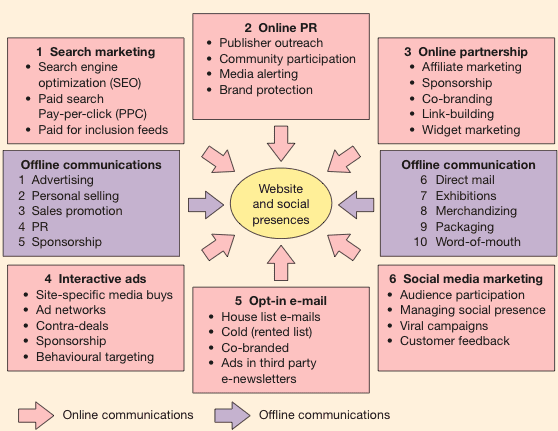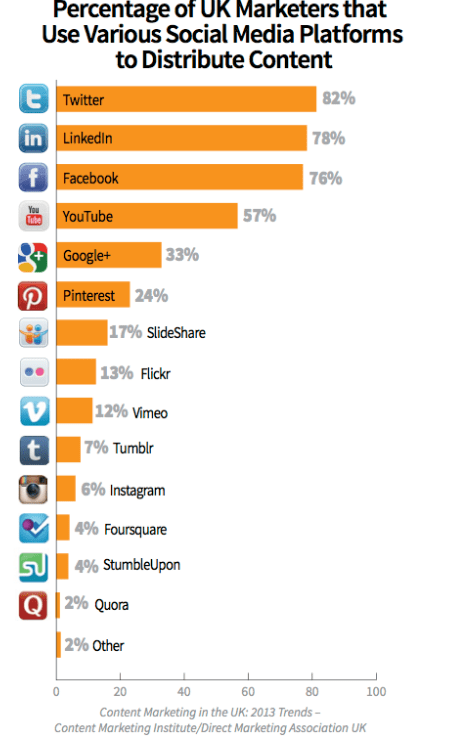4 Steps to creating a plan for online customer acquisition
Having a digital marketing strategy for your organisation is essential to ensure your marketing activities are supporting specific marketing objectives. The rise in the number of different digital channels available to target your customer base continues to grow as shown by this BIG list of todays customer acquisition channels by David Sealey, so withough without a sound framework in place to manage, monitor and measure organisation performance, not having a digital communications plan could prove disastrous.
In a previous post, I provided an actionable plan to help create a retention strategy using key digital tactics. Retention by its definition is 'maintaining or preserving your existing customer base loyal to your product offering.
This post will is an introduction to creating an outline framework to create a plan for online customer acquisition techniques - defined as tactics to help drive traffic or generating a lead or purchase through a website.
Acquisition techniques
This framework has been divided into 5 key sections:
-
1. What's your position in the market?
Before launching your acquisition strategy, it's important to assess where your organisation is within it's sector. You should already have a wealth of analytical insights on key metrics and have access to key performance measures on how your digital channels are performing.
Below are a few other areas to consider.
- What's your Unique Selling Point? Do you have a strapline and how does your business use this to differentiate itself within the market? How is the company defined online and how are you perceived by customers (existing, past) and suppliers?
- Know your audience - Who is your target audience? Create a profile of who your target customer is and how they currently interact with your brand online. Web analytics and historic sales data should be a useful source of information to understand who your customers are, geography, products sold, repeat visit rate and purchase patterns
- Know your competitors - Do you have a defined list of competitors within your market? Are you analysing their performance and tracking their activity? It's essential you are building up a profile of who they are, how they interact with the market and their own USP's or differentiators e.g. do they opt for price-driven strategies, PR-driven activity , etc
To build any successful strategy, it's important objectives are laid out in what you are looking to achieve and why. To make these realistic, I'd recommend they're created using the SMART approach (Specific, Measureable, Attainable, Realistic and Timely).
As mentioned in section 1, having an understanding of 'What your current position is within the market' will help you create and define a picture of the current position and areas to focus your strategy - here is an example of an acquisition based objective:
'Increase website visits by 10% during the period of June – August 2013 compared to same period of the previous year measured through Google Analytics'.
This objective provides a specific metric you're looking to achieve within a timeframe and will be measured. To ensure it's a realistic objective, it's important you have completed your groundwork on current performance by assessing and researching past performance.
-
3. Who is your target audience?
From section 1, you should now have a good understanding of your customer history and type of audience you plan to attract through this acquisition strategy.
To bring this to life (and to help get internal support within your organisation), create personas of who you are looking to target. Using third party data e.g. Experian Hitwise will help you add additional detail to your proposed audience.
Example of using Hitwise for a Sports Retailer
The sports retailer which sells replica shirts, so how to use Hitwise.
- Sector: 'Suburban Mindsets' (Group F). Age profile of 18-35. Key Points: Active internet users with a specific interest in sports sites and football being of particular interest.
- Persona A: - Male, football fan, historically makes an annual purchase from online sports retailer as and when their football team releases a new replica shirt which is an annual purchase around May - July.
- Justification: This persona will prove to be a key target audience during the 3 month sales period to promote the product offering associated with team supported and incentivising existing customers.
-
4. Choosing the right Acquisition tactics
Now begin to define how the objective will be realised - by identifying which digital marketing tactics you plan to use as an acquisition technique. The chosen tactics should be justified from the findings you uncovered in evaluating your existing customer i.e. how and where your target audience reside, do they use search engines? are they active on social media? are they loyal in their online purchase patterns - understanding this will help you create a list of preferred tactics to implement.
Key digital tactics for an acquisition plan
It's useful to group the main tactics together as Dave Chaffey has in this summary of 6 key online channels to increase Reach.

The relative importance of key tactics are suggested by the research I have listed under each.
1. SEO
- 94% of clicks were generated through natural search results (Econsultancy, 2012)
- 100% of searchers look at the first organic result compared to only 50% look at first paid result
- UK internet users now spend 64% more time using search engines (UKOM/Econsultancy, 2010)
- For branded terms, UK searchers are more likely to click on the first 3 results (MEC/Econsultancy, 2012)
- The advertiser is not paying when a user clicks on the blue text link within the organic results.
2. Affiliate
- Merchant only pays on completed sale, therefore eliminates upfront risk
- 30% of affiliates are sending at least 20k visitors a month to merchants website, up 19% (A4U Census, 2011)
- Expected to drive £4.62bn online sales in 2010, an increase of 12% on 2009 (Econsultancy, 2010)
3. Paid Search
- A measured advertising mechanism
- More than 54% of companies are planning to increase their budgets (Experian/Econsultancy, 2012)
- 39% of companies are spending more than £100k annually (Guava, 2011)
- Paid search is highly targeted
Easy to track performance for specific keyword campaigns.
4. Social Media
- Cost effective channel to engage with target audience
- Effective tool to help with amplifying the brand and deeper engagement with customers
- Supports company SEO strategy e.g. Google +, Twitter
- Reputation management – good indicator on how the brand is perceived in the external market sector
- Ability for your message and story to reach as many people as possible.
The DMA-CMI report report backs up the growth in social media and content marketing, which shows the impact that social media is having for companies.

5. Email
- Main reason to subscribe is to promotions (Econsultancy, 2012)
- 72% of companies rate email as excellent in terms of ROI
- Low cost of fulfilment – less than direct mail
- Personalisation of email it is cheaper than direct mail
- An easy and cost effective channel to test different creative and messaging
- Ability to segment your audience to receive messaging around a specific product.
-
5. Monitor Performance
Referring back to the objective of this strategy which was: 'Increase website visits by 10% during the period of June – August 2013 compared to same period of the previous year measured through Google Analytics'. Each tactic should now be set specific KPI's to support this overall objective using the 3 M's approach as a reporting platform:
- a. Measure – The objective is to drive incremental visits to site. So all approaches listed will be measuring visit referral traffic during the campaign
- b. Monitor – How will the reporting be conducted e.g. weekly or monthly for the period of June – August 2013?
- c. Manage – Who will be overseeing all reporting and assessing the overall campaign? Providing feedback to the rest of your team is also essential.
Suggested KPIs to monitor per tactic
SEO
- Number of Outbound links generated
- Traffic referral volume
- SERP position for keywords
- Pages viewed per visit
- % of brand & non-brand search terms generated
- No. of in-bound links generated.
Affiliate
- Number of affiliate sites recruited to program
- Number of affiliate sites generating revenues
- % contribution of sales compared to total sales generated through website
- Repeat purchase rate
- % sales which originated through the affiliate channel
- Affiliate retention rate.
Email
- Number of subscribers
- Open rate
- CTR
- % sales generated through email activity.
Social Media
- Followers
- Interactions e.g. Number of retweets, likes
- % contribution of total traffic referred to website.

Thanks to Simon for sharing his advice and opinions in this post. Simon is a keen cyclist – see about his efforts on
Lejog Simon Swan has worked in online marketing for both start-ups in the private sector as well as the public sector organisations. You can
follow Simon on Twitter or read his
blog. These views are my personal views and not those of my employer.





 Thanks to Simon for sharing his advice and opinions in this post. Simon is a keen cyclist – see about his efforts on
Thanks to Simon for sharing his advice and opinions in this post. Simon is a keen cyclist – see about his efforts on 



